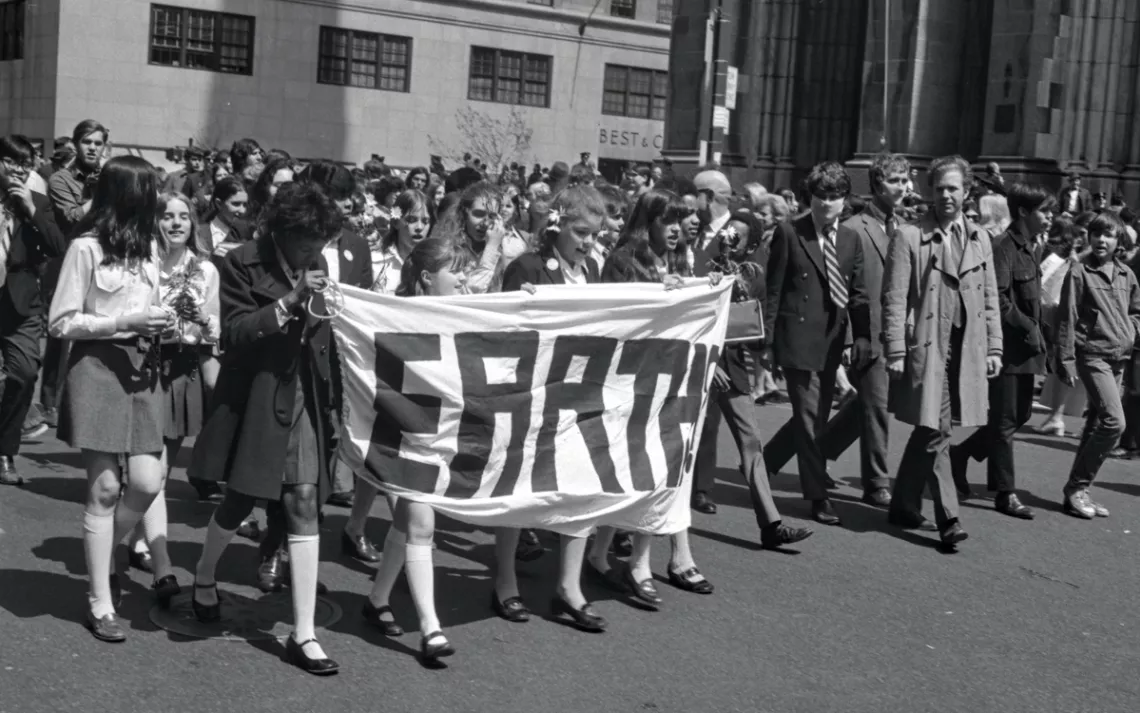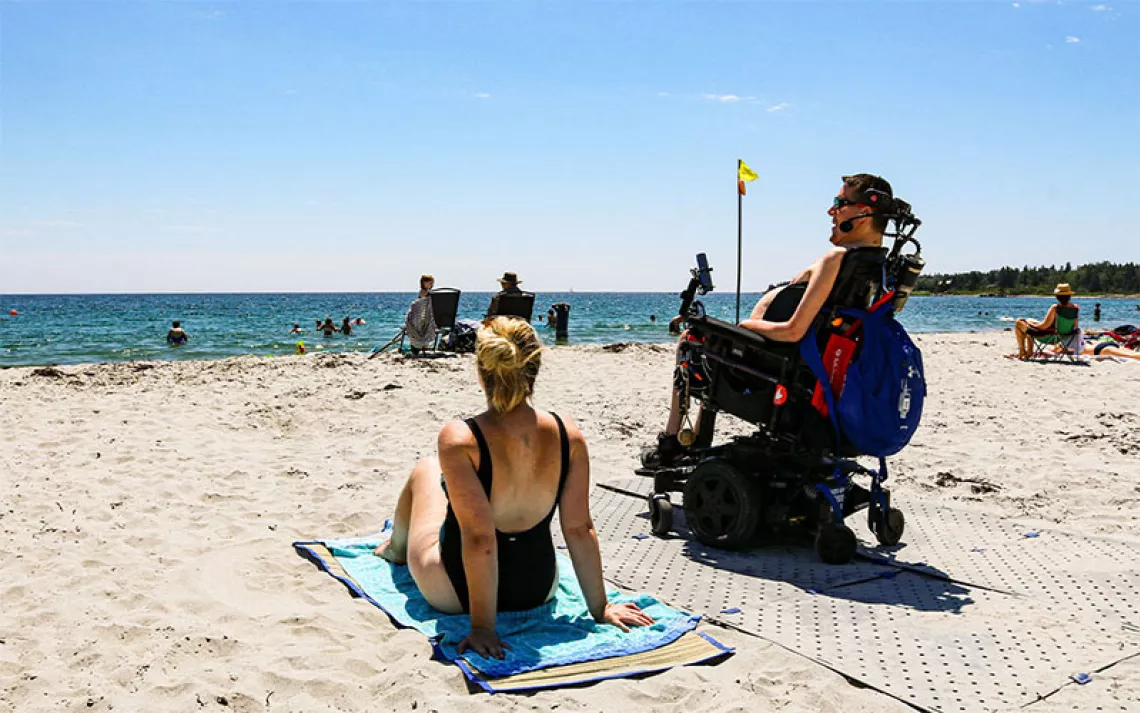How Earth Day Launched My Environmentalist Career
Rallies and protests like Earth Day are key to building a movement

Students march on the first Earth Day in 1970. | Photo: NYC Municipal Archives
My first environmental campaign was about napkins. When I was growing up in Phoenix in the 1980s, my household always used paper napkins, except on holidays like Thanksgiving and Christmas. I thought nothing about this until spring 1990, when, at 15, I finally realized that paper comes from forests and that, presumably, our family could spare some trees by using cloth napkins. After my brief campaign of moral suasion, my mother went out and bought a selection of workaday reusable napkins.
I don't think I would have launched that modest sustainability effort had it not been for Earth Day. My parents weren't particularly political or environmentally conscious, so I don't know what spurred them to take me and my sister to the big 20th-anniversary Earth Day rally that April at the Arizona capitol. But I do know that the event had a huge impact on me. I had never been to a demonstration before, and I was blown away by all the people, the signs, the banners, the speakers and singers on the stage. Perhaps I would have found my way to environmental advocacy without Earth Day, but I'm sure it would have taken a lot longer.
This year marks the semicentennial of Earth Day (see "Earth Day at 50"), and the occasion offers an opportunity to reflect on the role of public protests in the movement for ecological justice. In this time of nonstop (and absolutely necessary) resistance to retrograde political forces, some protest fatigue is understandable. And of course demonstrations are just one instrument in the toolbox of social change: Making the pivot to a sustainable and just society also requires signing petitions, organizing friends and relatives, contacting elected officials, and, above all, voting. At the same time, there's nothing like a protest for building, strengthening, and sustaining a social movement.
Gathering in a public space with like-minded people and demanding political change is about far more than pressuring elected officials into action. A protest's pageantry—the Instagrammable signs, the chants, the music—also serves as a kind of mirror that allows a movement to see itself in full and, in that self-reflection, to feel its power and strength. A rally can be a demonstration of hope or anger—what matters is simply that it's public, a civic performance of passion. The mere spectacle can, if big and bold enough, shape the political landscape, like a flood that shifts the course of a river. Or, to use another bio-metaphor, a protest is like a spore in a fungal web, a single node that branches out to establish new connections, which eventually blossom into an entire network before bursting out into the sun.
A street demonstration can be a social movement's best recruitment tool—and if you doubt that, think of all those high schoolers marching for the first time in last fall's climate strikes. With any luck, and a good dose of organizers' sweat equity, Earth Day 2020 will also bring thousands of new people into the environmental movement. Maybe one of those people will be the next Greta Thunberg—or maybe another kid hoping to protect the planet one napkin at a time.
This article appeared in the March/April 2020 edition with the headline "Into the Streets."
 The Magazine of The Sierra Club
The Magazine of The Sierra Club







